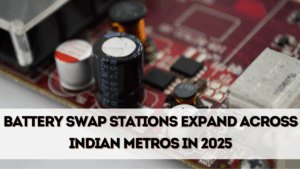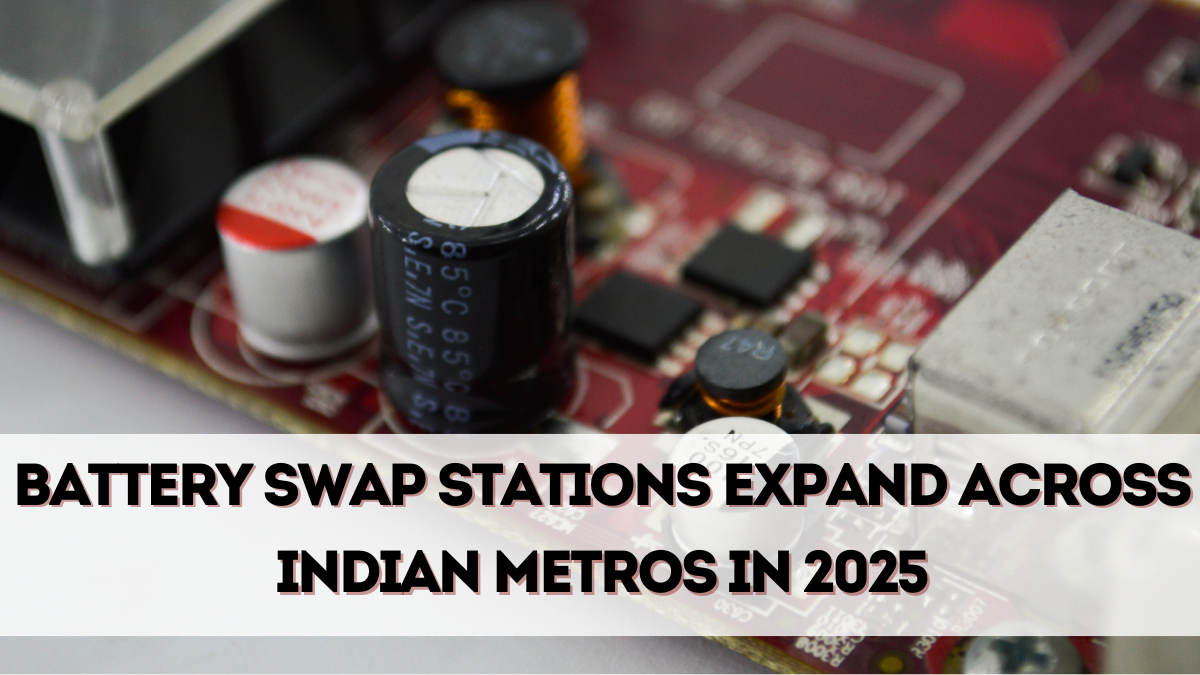India’s electric vehicle ecosystem is witnessing a major shift in September 2025 as battery swap stations rapidly expand across metro cities. These stations are designed to solve one of the biggest challenges of EV ownership — long charging times.
Instead of waiting hours, drivers can swap an empty battery for a fully charged one in just a few minutes.

Why Battery Swapping Matters
Charging has always been a hurdle in India’s EV journey.
-
Slow Charging: Normal home chargers take 6–8 hours.
-
Fast Charging Costs: Public fast chargers are expensive and limited.
-
Range Anxiety: Many drivers fear running out of charge mid-journey.
Battery swap stations offer a quick, affordable, and scalable solution, especially for urban commuters and commercial fleets.
How Battery Swap Stations Work
The process is simple and efficient.
-
Drivers arrive at a swap station.
-
A machine removes the depleted battery.
-
A fresh, fully charged battery is installed within 3–5 minutes.
-
The driver continues their journey without waiting.
This system is particularly useful for taxis, delivery vehicles, and two-wheelers, which need constant availability.
Current Expansion in India
In September 2025, several companies are leading the rollout.
-
Ola Electric has launched swap networks for scooters in Bengaluru and Delhi.
-
Sun Mobility is expanding to Mumbai, Chennai, and Hyderabad.
-
Battery Smart is focusing on two-wheeler and three-wheeler fleets.
Together, these networks are making India’s cities EV-ready at scale.
Government Support
The Indian government is backing the expansion with strong policies.
-
Subsidies under FAME-III make battery swapping affordable.
-
Guidelines mandate standardized battery sizes to ensure compatibility.
-
State governments are offering incentives for private operators to set up swap hubs.
This combined effort ensures battery swapping becomes a mainstream solution.
Benefits for EV Owners
The rise of EV battery swap stations brings multiple advantages.
-
Time Saving: Swap in minutes compared to long charging hours.
-
Lower Upfront Costs: Buyers can purchase vehicles without owning batteries, reducing prices.
-
Flexibility: Access to charged batteries anytime.
-
Peace of Mind: Reduced range anxiety encourages more EV adoption.
This system is expected to boost sales of two-wheelers and small EVs in particular.
Impact on the EV Market
Battery swapping could reshape India’s EV market.
-
Shared mobility operators like Ola and Uber can keep fleets running longer.
-
Delivery companies such as Zomato and Swiggy may adopt swap-ready scooters.
-
Automakers may design swap-compatible models to reach wider buyers.
Analysts predict this could accelerate EV adoption in densely populated urban centers.
Challenges Ahead
Despite the promise, challenges remain.
-
Standardization Issues: Different automakers use different battery sizes.
-
High Setup Costs: Establishing a swap station requires large investments.
-
Battery Ownership Confusion: Buyers must adapt to battery-as-a-service models.
-
Safety Concerns: Batteries must be handled carefully to prevent overheating risks.
Industry players are working with regulators to solve these gaps before large-scale expansion.
Future Outlook
The future of battery swapping in India looks promising.
-
By 2026, swap stations could be present in all metro and Tier-1 cities.
-
Expansion to Tier-2 and Tier-3 towns will follow as EV adoption spreads.
-
Integration with UPI-based digital payments will make the process seamless.
-
Partnerships between automakers and energy companies will further reduce costs.
This positions India to become a global leader in battery swapping solutions.
FAQs
What are EV battery swap stations?
They are facilities where EV owners can replace a depleted battery with a fully charged one in minutes.
When are swap stations expanding in India?
In September 2025, major networks are being rolled out in metro cities.
Which companies are leading the rollout?
Ola Electric, Sun Mobility, and Battery Smart are among the key players.
What are the benefits of battery swapping?
It saves time, lowers upfront vehicle costs, reduces range anxiety, and supports fleet operators.
What challenges exist for swapping adoption?
Standardization, high costs, and safety management remain hurdles for large-scale rollout.
Click here to know more.
